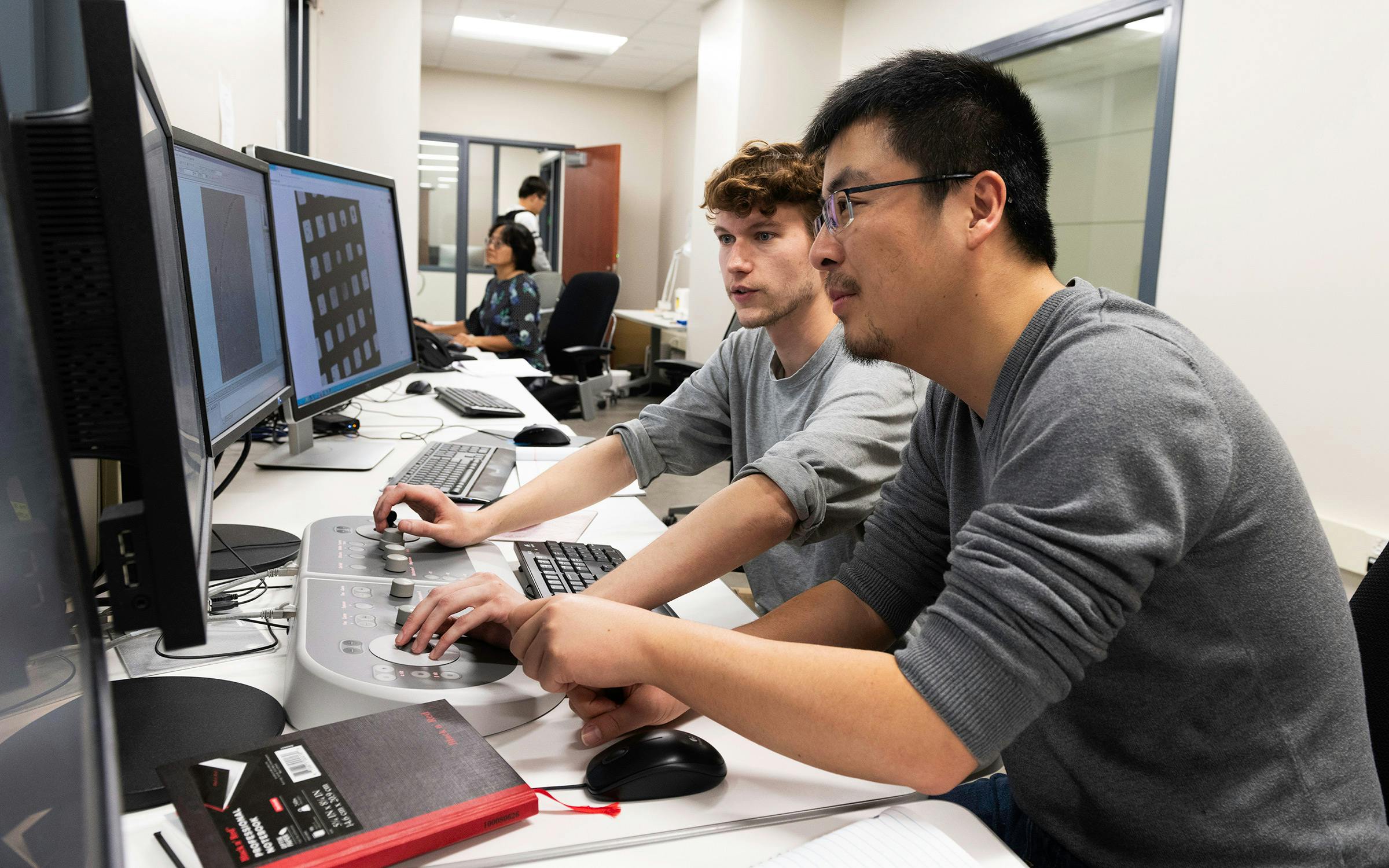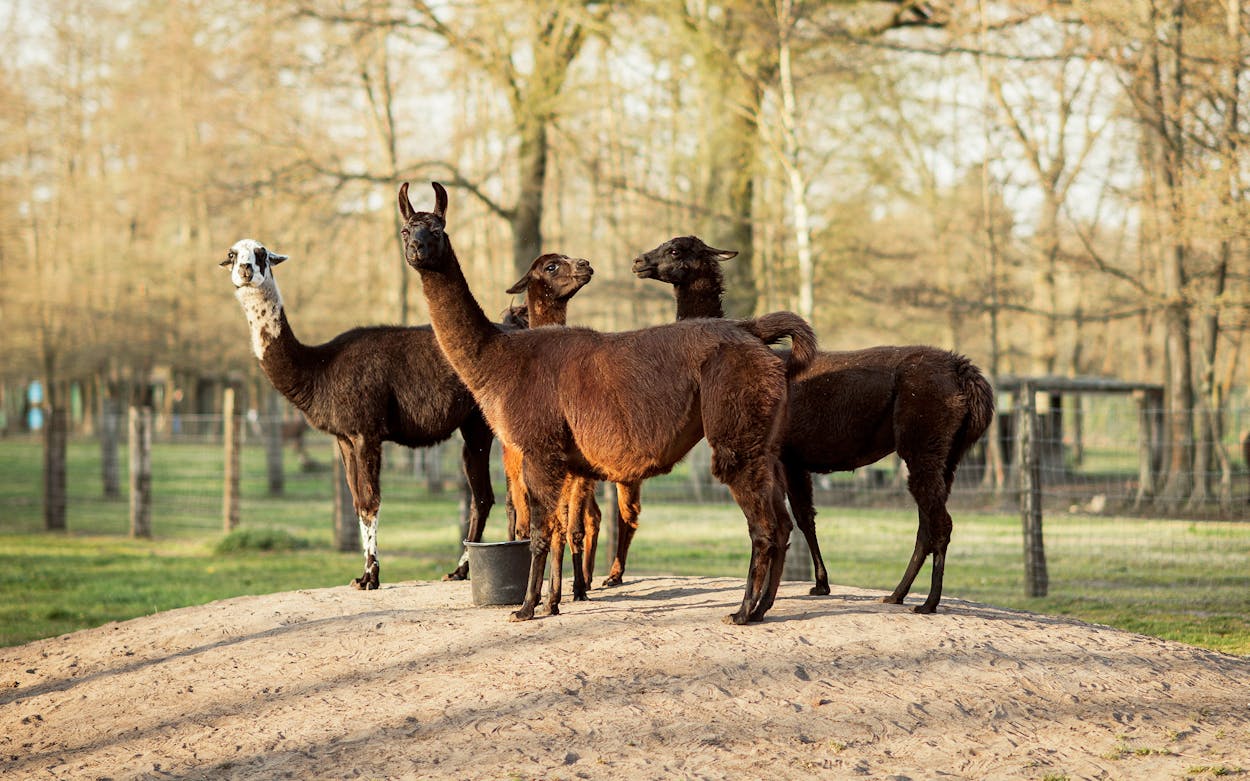When Daniel Wrapp joined the McLellan Lab as a graduate student four years ago, explaining his work as a molecular biologist was a great way to get someone’s eyes to glaze over. His research centered on antibodies in llamas that might be used to prevent coronavirus molecules from infecting humans. In 2020, of course, the COVID-19 pandemic has given the world a whole new appreciation for work like his.
On Tuesday, the world’s largest multidisciplinary scientific society, the American Association for the Advancement of Science, named the recipients of its annual Golden Goose Awards. The honor recognizes scientific breakthroughs that start in unusual places—like a vial of blood from a llama named Winter, whose antibodies have proven critical in the development of new treatments for COVID-19, including the drug Bamlamivimab. Jason McLellan, namesake professor of the University of Texas at Austin lab, and Wrapp—who completed his Ph.D. defense in November—were named as Golden Goose winners for both their work with the llama antibodies and their part in mapping the coronavirus molecule that causes COVID-19.
Texas Monthly caught up with Wrapp to learn more about the role that llamas have played in developing the monoclonal antibody therapies that, so far, appear to be one of the most effective ways to prevent severe cases of COVID-19.
Texas Monthly: What’s a llama have to do with people getting therapeutic treatments for a disease that we didn’t know existed until a year ago?
Daniel Wrapp: Llamas produce this specialized class of antibodies, which are called nanobodies. They’re about half the size of the antibodies that you or I would make. Because of that, they have some some really interesting properties. They tend to be more stable, and they’re able to bind into smaller nooks and crannies that our larger antibodies can’t access. The goal with both a vaccine or a therapeutic is to get antibodies that recognize the virus and neutralize it into a person’s bloodstream. With a vaccine, you give a person something that looks like the virus, so they raise their own antibodies against it. With a therapeutic, you just administer the antibodies directly. So your body’s not producing the antibodies, but because they’re circulating in your bloodstream for a given period of time, you’ll be protected during that period of time. There’s been kind of a rush to isolate these antibodies over the past nine or ten months.
TM: How do the more stable, smaller llama antibodies help people fight the virus?
DW: The target for all of these antibodies is a spike protein, which is on the surface of the virus. That protein allows the virus to bind to our host cells and infect them. Antibodies will bind to this spike protein and prevent it from performing its function. Because llama antibodies are more stable, hopefully they can survive in your bloodstream longer, which is important, since you’re not actually producing them. It’s important that they stick around longer, so you have protection for that extended period of time. That’s where the stability comes in.
TM: How did medical science identify this antibody in llamas and decide, “Okay, we need to get this into people to fight disease?”
DW: People figured out in the early nineties that llamas produced this specialized class of small mini-antibodies. In 2016, we started working with a group in Belgium at Ghent University. We wanted to produce these nanobodies against coronaviruses that caused the MERS outbreak in 2012 and the first SARS outbreak in 2002. So we immunized this llama with spike proteins from both of those viruses.

TM: Is that Winter?
DW: Yes, that’s Winter. What Winter produced in response to this vaccination that we gave her was a ton of really potently neutralizing antibodies, some directed against the MERS virus spike and some directed against the SARS virus spike. So we were in the process of writing up these results, and we were really excited about them, and then the current COVID-19 pandemic hit. Because of the similarity between the SARS virus and the virus that causes COVID-19, we thought that some of the antibodies that we isolated might be what’s called cross-reactive against the two viruses. And we found that was the case, so we went into animal trials testing this nanobody as a possible therapeutic.
TM: I remember learning about Winter and the llama antibodies earlier this year, and now we’re seeing treatments based on that work given to patients in Texas hospitals. Is that an unusual pace of development and research, or was I just not paying attention until it was already close to a breakthrough?
DW: Things are moving at kind of a breakneck pace, and I think probably the best example of that is the vaccine development. We’re seeing potential upcoming approval of multiple different vaccines to treat COVID-19, and the virus didn’t emerge until less than a year ago. If you think about the development of a polio vaccine? The ancient Egyptians knew about polio. It took thousands of years to develop a vaccine, until Jonas Salk did. And now, because there’s been so much just fundamental biological research, we’re able to look at how these things function, figure out how to leverage the knowledge that we’ve gained from these experiments and translate them into treatments and vaccines. And because there’s such an urgent need, everyone is focused on this problem in the scientific community.
TM: Is this a “moon shot” thing where, if the scientific community applies everything they have to solve the problem, they’re able to? Or is this the result of a lot of the groundwork laid over a lot of years paying off when we need it?
DW: It’s a combination of both. Our lab has been working on coronaviruses since 2015, and a lot of the discoveries that we made in 2016 and 2017 have been incorporated into a lot of the leading vaccine candidates. If that preexisting knowledge wasn’t available, it would have taken much longer to develop these effective, safe vaccines. But at the same time, every day since the beginning of the year, every lab in the world that was still open and operating was focused on how to fight coronavirus and figuring out how it infects people. And so even over the past year, the amount of knowledge that the scientific community has been able to accrue has been really impressive.
TM: With the therapeutics, is there a future where it’s something you get prescribed when there’s a coronavirus circulating, and then you get a pill or a nasal spray to get the nanobodies?
DW: For the foreseeable future, we might have to keep dealing with these coronaviruses, but it will probably be a little bit more complicated than taking a pill. The antibody therapeutics that are being developed now will require an injection to get into your bloodstream. I think the best hope is in the future there will be what people are referring to as a universal coronavirus vaccine. So you get one shot and you’re protected against not only the virus that causes COVID-19, but also the virus that causes SARS and MERS and every other coronavirus that has yet to emerge that we don’t even know about yet. That’s still a ways off.
TM: Is there a reason why llamas have these antibodies, or is it just kind of a quirk of nature?
DW: It seems like it kind of emerged as just sort of a fluke mutation, and because it produced something that was useful to the llamas, it stuck around. It gave them sort of an evolutionary advantage to produce these antibodies, which could fight off disease, and so it got incorporated.
TM: Is Winter in Texas or in Belgium?
DW: She’s in Belgium, unfortunately. I haven’t had the opportunity to actually meet Winter, but we owe her a lot. She’s been a big part of the research community.
TM: You’ve been a part of the coronavirus research community for years, but your work was suddenly at the center of the world in March. What did you learn from that?
DW: I think the biggest takeaway really is the importance of basic scientific research. Even two years ago, we had no idea that this was going to happen. I was working on these nanobodies thinking it would be a nice paper that a couple of people would read, and I would find it interesting, but nobody else would really care. And now, suddenly, I’m talking to you.
TM: What is it like to have the entire scientific community suddenly interested in the same research puzzles that you’ve been working on?
DW: It’s been fun, actually. A couple of years ago, coronaviruses were sort of a niche. I could probably name on both hands the labs around the world who did what we did and who tried to solve the questions that we did. A year and a half ago, if I were trying to describe my research to someone, their eyes would glaze over and they say, why the hell are you looking for antibodies in llamas against a virus that nobody in the world has? But, like, penicillin was found on moldy bread. You never know where the next scientific breakthrough is going to come from.








